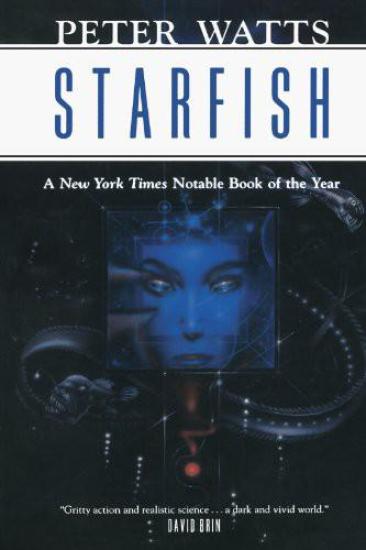
Series: Book 1 in the Rifters series
Rating: Not rated
Tags: EN-Alire, Lang:en
Summary
Civilization rests on the backs of its outcasts.
So when civilization needs someone to run generating
stations three kilometers below the surface of the
Pacific, it seeks out a special sort of person for its
Rifters program. It recruits those whose histories
have preadapted them to dangerous environments, people so
used to broken bodies and chronic stress that life on the
edge of an undersea volcano would actually be a step
up. Nobody worries too much about job satisfaction;
if you haven't spent a lifetime learning the futility of
fighting back, you wouldn't be a rifter in the first
place. It's a small price to keep the lights going,
back on shore.
But there are things among the cliffs and trenches of
the Juan de Fuca Ridge that no one expected to find, and
enough pressure can forge the most obedient career-victim
into something made of iron. At first, not even the
rifters know what they have in them—and by the time
anyone else finds out, the outcast and the
downtrodden have their hands on a kill switch for the
whole damn planet...
Peter Watts's first novel explores the last
mysterious place on earth--the floor of a deep sea rift.
Channer Vent is a zone of freezing darkness that belongs
to shellfish the size of boulders and crimson worms three
meters long. It's the temporary home of the maintenance
crew of a geothermal energy plant--a crew made up of the
damaged and dysfunctional flotsam of an overpopulated
near-future earth. The crew's reluctant leader, basket
case Lenie Clarke, can barely survive in the upper world,
but she quickly falls under the rift's spell, just as
Watts's magical descriptions of it enchant the reader:
"Steam never gets a chance to form at three hundred
atmospheres, but thermal distortion turns the water into
a column of writhing liquid prisms, hotter than molten
glass."
Watts is investigating monsters. Gigantic deep sea
monsters, surgically-altered-from-human monsters, faceless
jellied-brain computer monsters--which monsters are human,
which are more than human, which are less? Watts keeps the
story line stripped down to showcase the theme of
dehumanization. The anonymous millions who live along the
unstable shore of N'AmPac come under threat (a triggered
earthquake, and perhaps a disaster that's slower but even
more pitiless) from their own dehumanized creations. But
Watts is less interested in whether Lenie can save the dry
world as in whether she can save herself. In
Starfish, Watts stretches the boundaries of humanity up,
down, and sideways to see whether its dimensions reveal
anything we'd be proud to be a part of.
--Blaise Selby
Set in the early 21st century, Watts's debut
describes a future when the search for energy leads to
the tapping of geothermal sources deep in the ocean, as
in the Pacific's Juan de Fuca Rift, near Canada's
Northwest coast. The maintenance workers of the dangerous
underwater power plants are selected for their psychotic
tendencies, which enable them to forget their previous
lives on dry land, and are then surgically altered to
survive the intense pressure of the sea's abyssal depths.
These changes, which render the workers amphibious, also
leave them less than well equipped to face the threat of
powerful, archaic bacterialike creatures that proliferate
at the ocean bottom and use human hosts to carry them
upward to dry land, where their superior DNA could render
our species obsolete. The human resistance to these life
forms is described with a great deal of explicit violence
and graphic language, as well as well-orchestrated
paranoia that recalls the classic SF tale "Who Goes
There?" Watts's characterizations aren't strong but, as
in Arthur C. Clarke's The Deep Range, the underwater
setting and the technology employed there function as
characters in their own right, and quite vigorously. The
novel's pacing is excellent, making this, overall, a good
bet for beach reading. (July)
Amazon.com Review
From Publishers Weekly
Copyright 1999 Reed Business Information,
Inc.